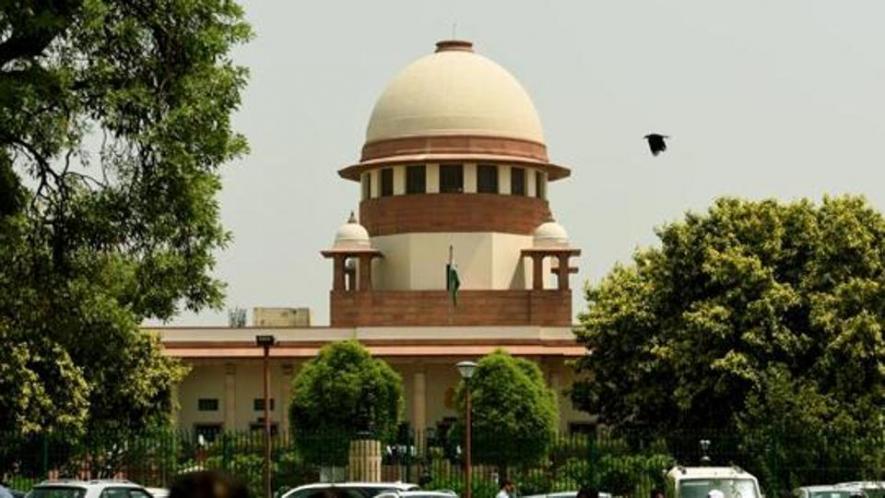Fading Powers of Master of Roster

File Photo
The Supreme Court now has a permanent Constitution Bench of five judges. Unlike the United States Supreme Court, India’s top court does not sit en banc, or all judges together, to decide on cases which raise questions of constitutional importance.
Article 145(3) provides for a minimum of five judges to decide any substantial question of law related to interpreting the Constitution. The practice until October 1, 2019 was that if a division bench needed to address any substantial question that involves interpreting the Constitution, the matter would be referred to a Constitution bench. Thereafter, the Chief Justice of India (CJI) would constitute a five-judge bench after taking into account how many cases are pending, the expertise and availability of judges and other considerations.
The increase in strength of the Supreme Court gave the CJI the opportunity and freedom to constitute a permanent Constitution Bench. The strength now stands at 34, out of which there will be the permanent bench, five three-judge benches and seven two-judge benches.
However, since the Supreme Court rules, 2013 have been amended, now the CJI has the power to constitute a one-judge bench to hear bail matters. Before this, the Supreme Court judges used to sit in a two-judge bench. The amended rules state that a special leave petition arising out of rejection of bail or anticipatory bail matters can be heard and disposed of by a judge nominated by the CJI. This will speed up the disposal of cases and buttress the principle of personal liberty.
Many authors and scholars have been saying that the CJI, by virtue of his powers to constitute a bench, has the power to control the final outcome. George H Gadbois, in his book Judges of Supreme Court of India 1950-1989 records Justice KS Hegde, who was appointed to the Supreme Court in 1967 (until 1973), affirms this position. In the same book, Justice YV Chandrachud, is recorded saying that he used to constitute benches of the senior-most judges in “politically-important cases” so as to avoid criticism that he might have constructed the bench in order to influence the outcome.
Scholars have, of late, claimed that the CJI constitutes a bench in order to minimise dissent; for he is aware of the ideology, thinking, and political inclinations of almost every other judge in the court. Nick Robinson, Anjana Agarwal and a team of other lawyers said in an article published in the Economic and Political Weekly that between 1950 and 2009 among all the cases decided by constitutional benches, only 11% recorded dissenting opinions. “Since independence, most of the constitution bench decisions (76%) consist of a single majority opinion with which all the other judges agree. By way of comparison, in the 2000s, the US Supreme Court had a unanimous opinion well less than half the time. In India, in 11% of constitution benches, there was a majority with at least one dissent; while a majority with only a concurrence (8%) or a majority with both a concurrence and dissent (4%) were somewhat less common.” their paper says.
The lack of dissenting views is a matter of concern, as today’s dissent is tomorrow’s law. Consider the 1976 ADM Jabalpur ruling and the recent privacy judgement. In ADM Jabalpur, it was said that during the proclamation of an Emergency, no person has the right to approach the Supreme Court to enforce his right to personal liberty under Article 21. This judgment was expressly overruled in Justice KS Puttaswamy v Union of India (2017), popularly known as the privacy judgment.
How constituting a permanent Constitution Bench will affect the Master of the Roster is obvious: With a permanent bench through the year, the CJI will not constitute benches for every case referred to the Constitution Bench.
There are four primary and straightforward benefits of this: first, the Constitution Bench will function and adjudicate over important matters throughout the year. Second, it cannot be said that the CJI has influenced the judgment of the court. Third, the judges, too, will not constitute benches in the manner that Justice Chandrachud pointed out was the practice. Four, it could increase the extent of dissent we find at present in the rulings of the Apex court.
The last is very significant as dissent is essential, even fundamental, to not just India’s constitutional values but to the principles cherished by constitutions across the globe. The only foreseeable hitch could be that the judges’ workload is very high (see here) and this makes it difficult for them to frame dissenting views.
For a better-administered apex court, what remains to be seen is if it will work the way it has been imagined. Or, whether the new permanent bench will pave the way for more sound and unbiased judgments or not. The dissenting opinions of Justices HR Khanna and Justice K Subba Rao are still talked about—and with good reason. They provided rulings that later became the yardsticks to test the maturity of India’s judicial framework. For the habeas corpus case Justice HR Khanna was praised worldwide for a fearless and eloquent judgement. And, Kharak Singh v. State of Uttar Pradesh is another example where Justice Subba Rao wrote a dissenting opinion which is the law of the land today.
Whether the Supreme Court will have more Justice HR Khannas, and Justice K Subba Raos—the greatest dissenters of all time—is yet to be seen.
Prakhar Raghuvanshi is a student of law at the National Law University, Jodhpur. The views are personal.
Get the latest reports & analysis with people's perspective on Protests, movements & deep analytical videos, discussions of the current affairs in your Telegram app. Subscribe to NewsClick's Telegram channel & get Real-Time updates on stories, as they get published on our website.














